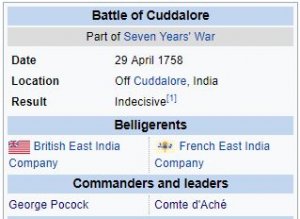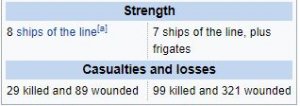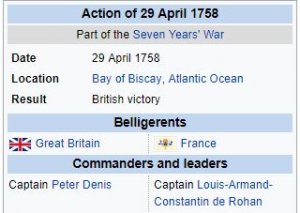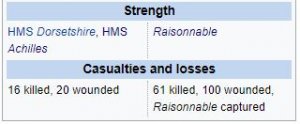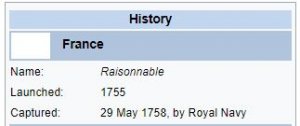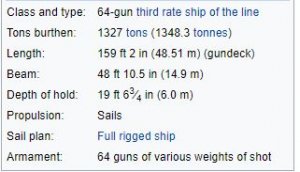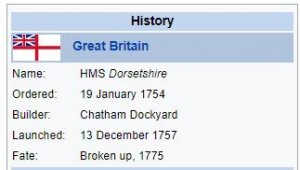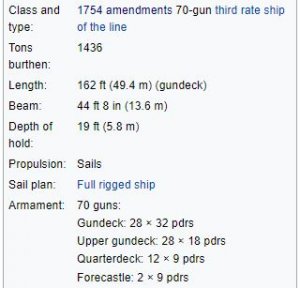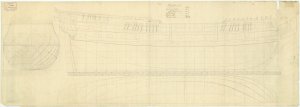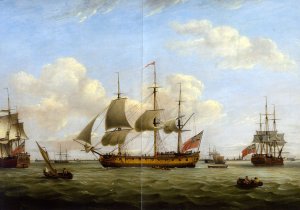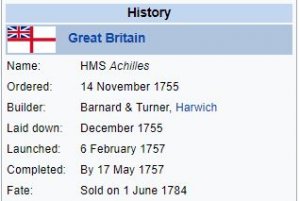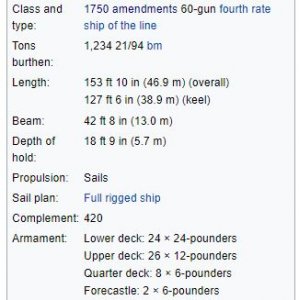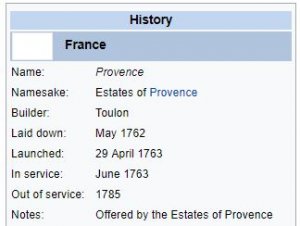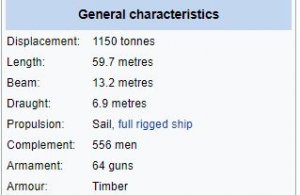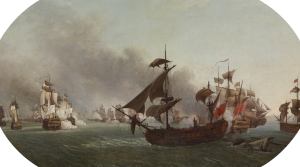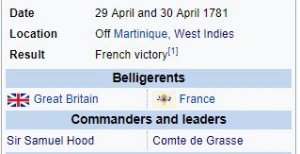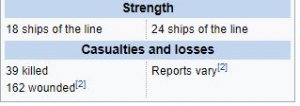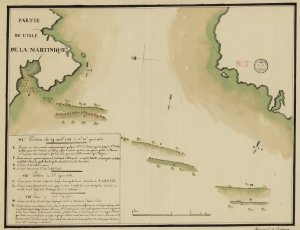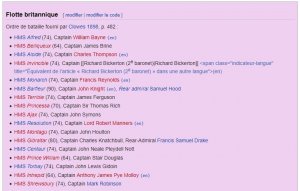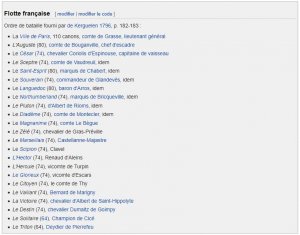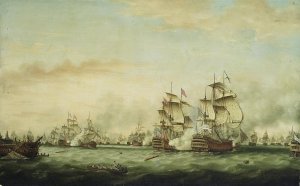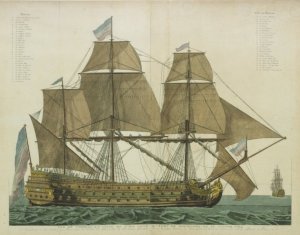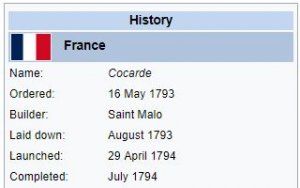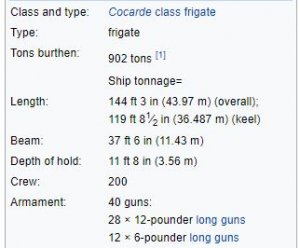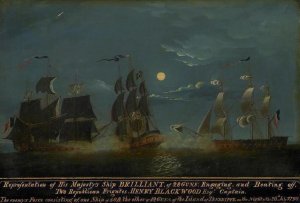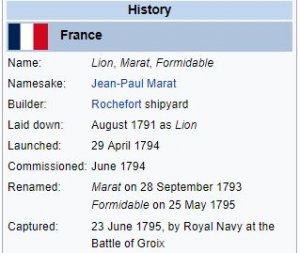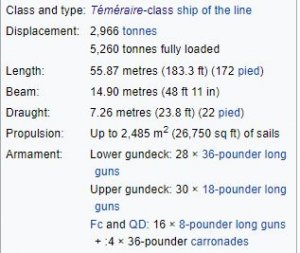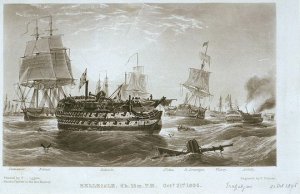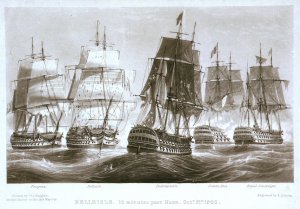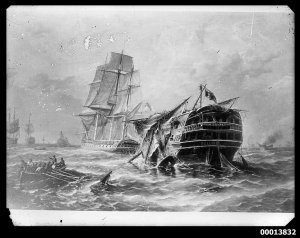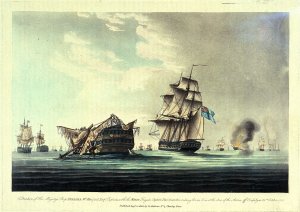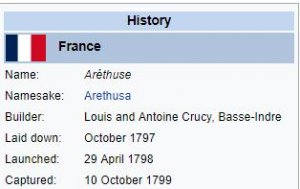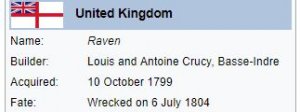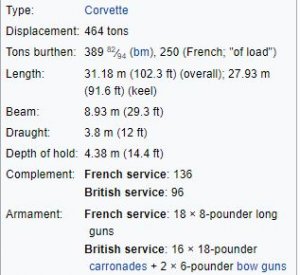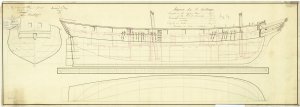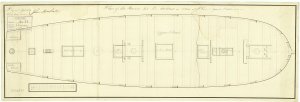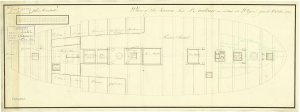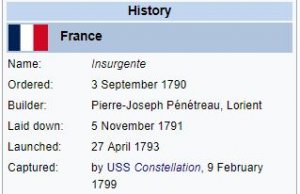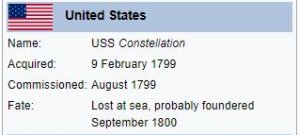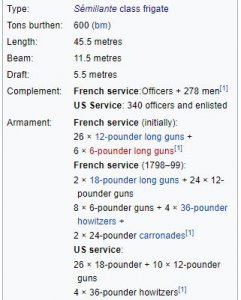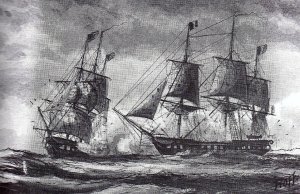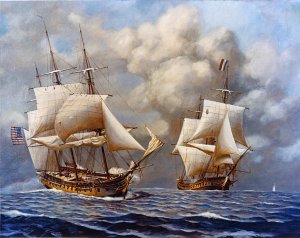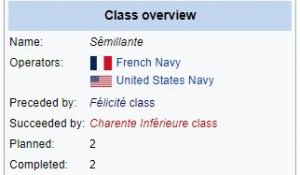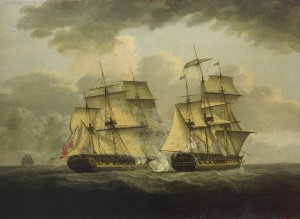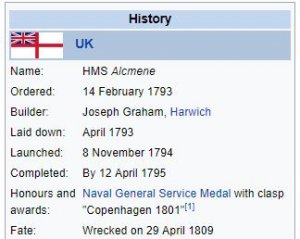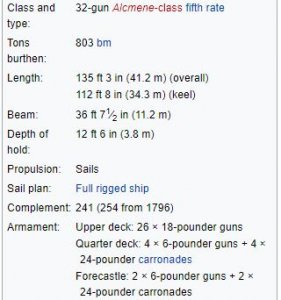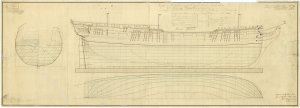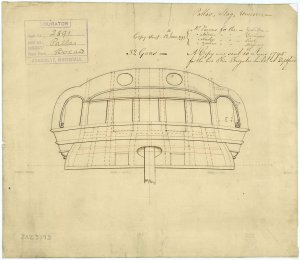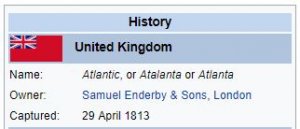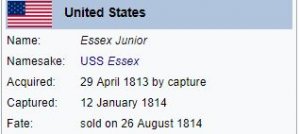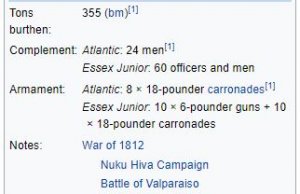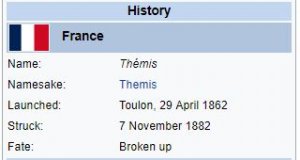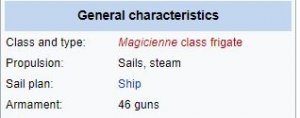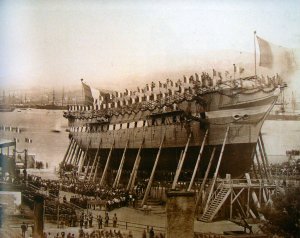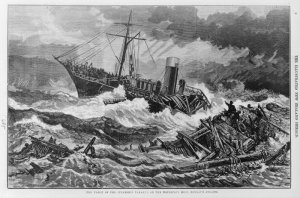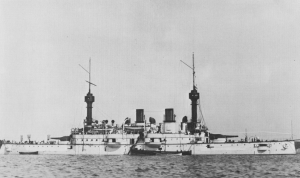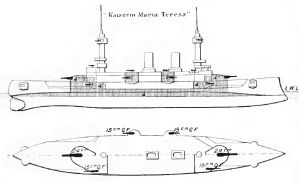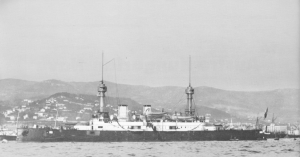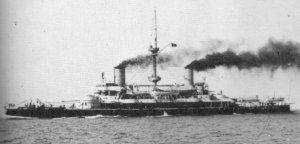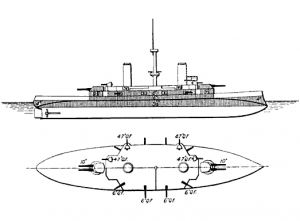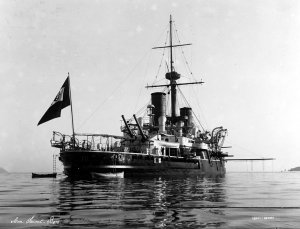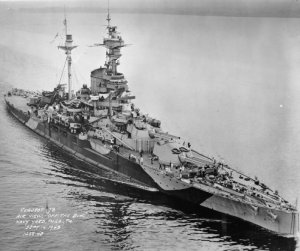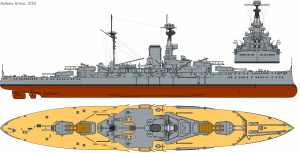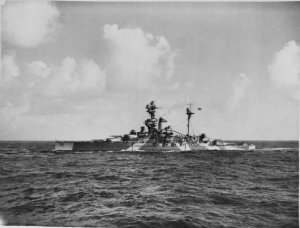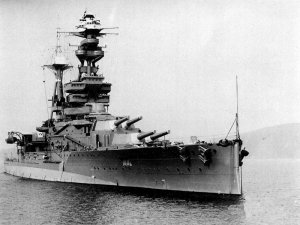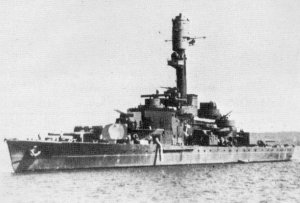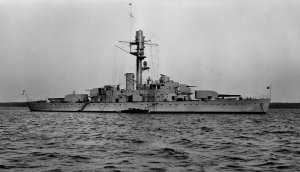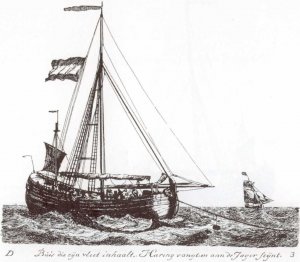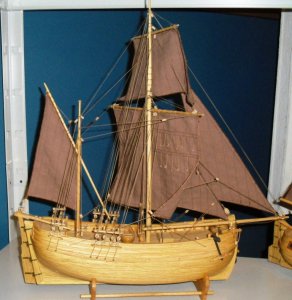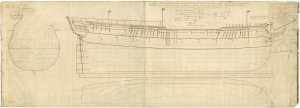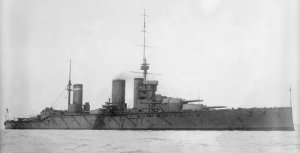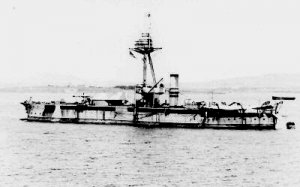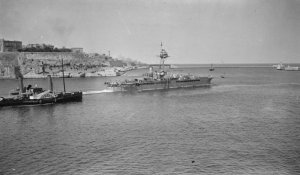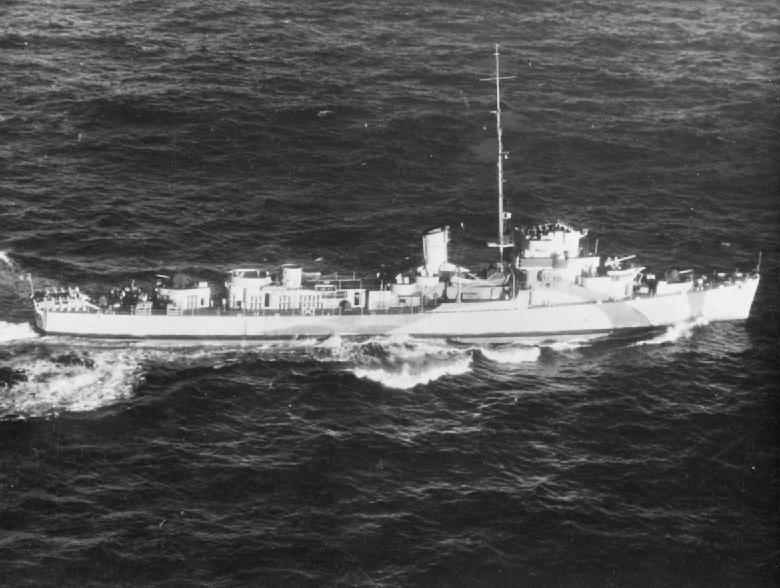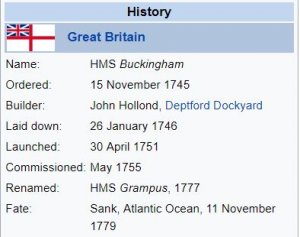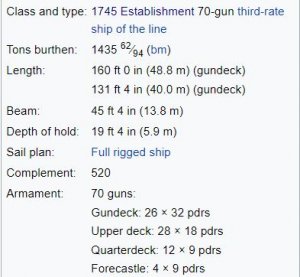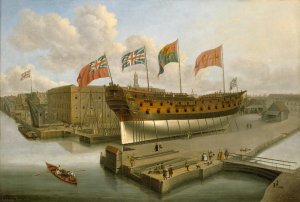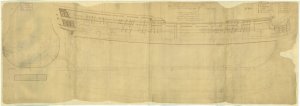Today in Naval History - Naval / Maritime Events in History
29 April 1943 - April 29 until May 6 - Convoy ONS 5 - 12 ships and 6 U-boats sunk in last major North Atlantic U-boat wolfpack attack
ONS 5 was the 5th of the numbered
ONS series of
Slow trade
convoys Outbound from the British Isles to
North America. The
North Atlantic battle surrounding it in May 1943 is regarded as the turning point of the
Battle of the Atlantic in World War II. The battle ebbed and flowed over a period of a week, and involved more than 50 Allied ships and their escorts, and over 30
U-boats. It saw heavy losses on both sides. However it was almost the last Allied convoy to do so, while losses inflicted on attacking U-boats and U-boat groups became a besetting feature of the campaign; As such it is seen as the point when the tactical and strategic advantage passed to the
Allies, and ushered in the period known to Nazi Germany's
Kriegsmarine as
Black May.
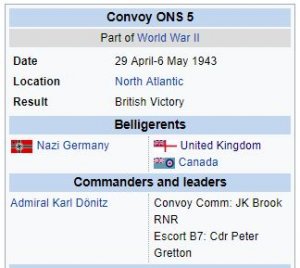
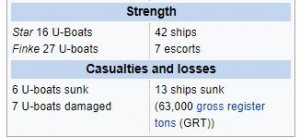 Battle of 28–29 April
Battle of 28–29 April
On the 28th ONS 5 arrived at the
Star patrol area, and was sighted at 0900 by
U-650.
U-650 held contact despite being forced to dive three times to avoid approaching aircraft at 1014, 1150 and 1518. By nightfall
U-650 had been joined by
U-375,
U-386,
U-528 and
U-537. The U-boats' contact reports alerted Commander Gretton to the presence of U-boats on the convoy's port bow, beam, and quarter and astern.
Duncan and
Tay made an unsuccessful depth charge attack after sighting a U-boat on the port bow at 1830.
Gretton mounted a vigorous defence as the U-boats attacked after dark. At 2000
Sunflower detected a
radar contact at 3,800 yards (3.5 km); and upon closing lost the radar contact, gained a doubtful
ASDIC contact, and dropped two depth charges. At 2245
Duncandetected a radar contact at 3,500 yards (3.2 km); and upon closing lost the radar contact, gained an ASDIC contact at 1,500 yards (1.4 km), lost contact at 1,100 yards (1.0 km), and dropped one depth charge. Upon returning to station
Duncan detected a radar contact at 2,300 yards (2.1 km); and upon closing sighted a U-boat which dived at 1,100 yards (1.0 km), and appeared on ASDIC at 500 yards (460 m).
Duncan dropped a pattern of ten depth charges; and, while turning for another attack, gained another radar contact. The radar contact disappeared at a range of 3,000 yards (2.7 km).
Duncan made no ASDIC contact, but dropped a single depth charge at the estimated diving position before making another radar contact at 4,000 yards (3.7 km). As
Duncan closed, the U-boat dived at a range of 1,500 yards (1.4 km).
Duncan gained a good ASDIC contact and dropped a pattern of ten depth charges over a visible wake. Two more depth charges were dropped when a weak ASDIC contact was regained at 0045. At 0132
Snowflake approached a hydrophone contact, and
U-532 was detected visually and on radar at a range of 1,300 yards (1.2 km).
U-532 launched six torpedoes. The closest one missed
Snowflake by about 20 yards (18 m). After
U-532 dived,
Snowflake dropped three depth charges on the initial ASDIC contact and ten depth charges when contact was regained at 2,000 yards (1.8 km).
Snowflake regained ASDIC contact at 1,400 yards (1.3 km) and dropped another pattern of ten depth charges. A short time later
Tay dropped depth charges on a good ASDIC contact astern of the convoy.
[8] U-532 returned to base to repair depth charge damage.
U-386 and
U-528, were also damaged by these attacks and forced to return to base.
U-386 arrived safely at
St Nazaire on 11 May, but
U-528 was attacked in the
Bay of Biscay and sunk by aircraft on the same day.
U-258 and
U-650 maintained contact through the night, and
U-258 was submerged ahead on the convoy at dawn on the 29th. As the convoy passed overhead at 0530,
U-258 rose to periscope depth and launched two torpedoes at
McKeesport. After one torpedo hit
McKeesport on the starboard bow,
Northern Gem detected
U-258 and dropped three depth charges.
Snowflake dropped a single depth charge on a doubtful SONAR contact at 0605 and two more depth charges at 0615 after contact was regained at a range of 1,200 yards (1.1 km).
McKeesport was abandoned and sunk by the escort to prevent discovery of classified documents by German boarders.
Northern Gem rescued all but one of the crew.
[10] U-258 had also been damaged, and was forced to return to base. The Admiralty arranged reinforcements for ONS 5 in response to this battle. HMS
Oribi was detached from SC127, and destroyers
Penn,
Panther,
Impulsive, and
Offa, of the 3rd Support Group under Capt. J.M. McCoy, RN, sailed from
Newfoundland. Weather rapidly deteriorated, and the convoy was sailing into a full gale by late afternoon of the 29th. About 1700
Sunflower was struck by a wave which filled the
crow's nest with water.
Oribi was slowed to 11 knots by the storm, but joined the convoy at 2300 as
Tay was attacking a U-boat astern. At 2312
Duncan obtained an ASDIC contact at 1,100 yards (1.0 km); and both
Duncan and
Snowflake dropped depth charges to discourage the U-boats.
30 April
ONS 5 found itself making less than 3 knots headway into a Force 10 gale. The convoy started to be scattered, some ships ending up 30 miles from the convoy, and the escorts were kept busy rounding up stragglers.
Oribi was able to refuel from the convoy oiler when the storm abated briefly on the 30th before the weather again made re-fuelling impossible, and a number of the destroyers became so low on fuel as to throw doubt on whether they could continue. At 2305
Snowflake made a radar contact at 3,300 yards (3.0 km) and dropped a single depth charge after the U-boat dived when illuminated by
star shell. The escorts dropped some random depth charges until dawn, and Admiral Dönitz cancelled the chase on the evening of 1 May.
Regrouping 1–3 May
On 1 May Dönitz ordered boats from
Star and
Specht, with some newcomers to form a new patrol line to the west. This was group
Finke (Finch) which was in place on 3 May numbering 27 boats, and tasked with intercepting westbound convoy SC128. The 3rd Support Group destroyers joined the convoy at 0100 2 May, but the fuel situation aboard destroyers became increasingly desperate as weather and frequent course adjustments to avoid icebergs prevented refueling. At 1400 on the 3rd Gretton was forced to take
Duncan to
St John's at economical speed (8 knots); and he arrived there with only 4 percent fuel remaining. In Gretton's absence, command was assumed by Lt-Cdr RE Sherwood, of HMS
Tay. The SONAR set aboard
Tay failed just as Sherwood assumed command of the escort group.
Impulsive also detached to Iceland at 1900 3 May, with
Northern Gem carrying the survivors from
McKeesport, while
Penn and
Panther detached for Newfoundland at 0600 4 May.
4 May
By 4 May the weather had abated to Force 6, and ONS 5 was now making up to 6 knots, though reduced to 30 ships and 7 escorts. The rest were scattered and proceeding independently, including a group of four with
Pink, trailing some 80 miles behind the main body. The 1st Support Group sailed from Newfoundland at midday with frigates
Wear,
Jed,
Spey and sloops
Pelican and
Sennen to replace
Oribi and
Offa whose fuel state would become critical on the 5th.
U-628 of group
Finke, assembled to catch convoy SC 128, sighted convoy ONS 5 at 2018. Two of the gathering group
Finke U-boats were attacked by RCAF
Cansos in separate incidents. One thought to have been
U-630 was sunk; but is now believed to have been
U-209, which was damaged in an attack by Canso W, and foundered later while attempting to return to base. The other,
U-438, was only slightly damaged in attacks by Canso E.
At 2220
Vidette detected
U-514 on radar at 3,600 yards (3.3 km) and approached until
U-514 dived when the range dropped to 900 yards (820 m).
Vidette punished
U-514 with a pattern of 14 depth charges causing damage putting
U-514 out of the battle until 7 May.
North Britain was straggling 6 miles (9.7 km) astern of the convoy, and sank within two minutes of being torpedoed by
U-707 at 2237.
Vidette detected
U-662 on radar at 3,600 yards (3.3 km) and, upon closing, sighted
U-732 at 1,000 yards (910 m). The conning tower was still visible at a range of 80 yards (73 m); and a pattern of 14 depth charges dropped by eye caused damage requiring
U-732 to return to base.
5 May
U-264 and
U-628 each launched five torpedoes shortly after midnight.
Harbury was hit at 0046;
Harperly was hit by two torpedoes at 0104; and
West Maximus was hit by one torpedo at 0103, another at 0110, and a third at 0135. Both U-boats claimed three ships; but modern historians credit the first freighter to
U-628 and the other two to
U-264.
[14] One of the torpedoes passed within 125 yards (114 m) of
Snowflake. At 0122
Snowflake started closing a radar contact illuminated by star shells fired by
Oribi; and both ships dropped depth charges. The gunfire encouraged
U-264 to dive, and the depth charges forced
U-270 to return to base.
[15] U-358 torpedoed
Bristol City at 0225, and
Wentworth at 0230.
[16] At dawn,
Lorient was missing from the convoy. No witnesses to her destruction survived the battle. Before
U-125 was sunk, she sent a radio report about sinking a steamship sailing independently; and modern historians assume
Lorient straggled from the convoy and was torpedoed by
U-125.
Northern Spray picked up 143 survivors from
North Britain,
Harbury,
Harperly, and
West Maximus by 0700 and was detached to take the rescued men to Newfoundland.
Loosestrife assumed the role of rescue ship and picked up the survivors from
Bristol City and
Wentworth. At 1057
Oribi sighted a surfaced U-boat at 7 miles (11 km).
U-223,
U-231,
U-621, and
U-634 dived as
Oribi approached.
[18] Oribi dropped 14 depth charges after the U-boats dived.
U-638 torpedoed
Dolius at 1240.
Sunflower gained an ASDIC contact at 1,200 yards (1.1 km) within minutes and destroyed
U-638 with a pattern of ten depth charges before rescuing survivors from
Dolius.
[19] Tay,
Oribi, and
Offa refueled from convoy oilers that afternoon.
[20] Selvistan,
Gharinda, and
Bonde were hit by a salvo of four torpedoes from
U-266 within the space of a few minutes about 1950.
Selvistan and
Bonde sank within two minutes.
Tay rescued survivors from the three ships while
Offa made depth charge attacks damaging
U-266, which was sunk by aircraft on 15 May while attempting to reach base for repairs.
At midday,
Pink commanded by
Lieutenant Atkinson[22] made a firm ASDIC contact 2,200 yards (2.0 km) ahead of her small convoy proceeding separately.
Pink spent 90 minutes making five depth charge and
hedgehog attacks.
Pink received post-war credit for destruction of
U-192; but later analysis concluded the victim,
U-358, returned to base after being damaged.
U-584 torpedoed
West Makadet while
Pink was attacking
U-358.
Pink rescued the survivors.
Night of 5–6 May
As May 5 faded into darkness,
Tay counted seven U-boats surfaced in the convoy's path; but ONS 5 was entering the fog formed where the warm
Gulf Stream meets the cold
Labrador Current off the
Grand Banks of Newfoundland. Visibility dropped to 1 mile (1.6 km) by 2202 and to 100 yards (91 m) by 0100. British
centimetric radar enabled the escorts to see while the U-boats could not. Many of the U-boats involved never returned to base to file their reports; so historians still struggle to correlate individual reports of the dozens of ships interacting briefly in no fewer than 24 attempted attacks on the night of 5/6 May.
At 2309
Vidette made a radar contact at 5,100 yards (4.7 km), and a second appeared while closing the first.
Vidette dropped a pattern of ten depth charges on a submarine seen submerging 700 yards (640 m) ahead, and then moved on to drop a pattern of five depth charges on the second contact which became visible at 900 yards (820 m). Historians suggest the first attack destroyed
U-531.
At 0030
Loosestrife made a radar contact at 5,200 yards (4.8 km). The U-boat turned away when the range reached 500 yards (460 m) and fired two torpedoes at
Loosestrife from its stern tubes while diving.
Loosestrife dropped a pattern of ten depth charges as it overran the diving U-boat. A reported slick of oil and debris is believed to have been produced by destruction of
U-192.
At 0252
Oribi collided with
U-125 first seen at a range of 200 yards (180 m) while investigating an ASDIC contact, but lost contact after the collision. While pursuing an ASDIC contact,
Snowflake detected
U-125 on radar at 0354, observed heavy conning tower damage by searchlight at a range of 100 yards (91 m), and watched the crew detonate scuttling charges and abandon ship. The escorts chose to continue protective patrolling around the convoy rather than attempting rescue of the U-boat crew assumed to have sunk the
Lorient.
At 0406
Vidette made an ASDIC contact at 800 yards (730 m), and made a hedgehog attack causing two explosions. Historians suggest this attack destroyed
U-630.
At 0443
Sunflower made an ASDIC contact at 1,200 yards (1.1 km) and subsequently sighted a surfacing U-boat.
Sunflower rammed
U-533 and dropped two depth charges as
U-533 attempted to dive. Both
Loosestrife and
U-533 were able to repair damage and remain at sea.
At 0552
Pelican was leading the 1st Support Group to reinforce the convoy escort when it detected a radar contact at 5,300 yards (4.8 km).
Pelican made visual contact at 300 yards (270 m), dropped a pattern of ten depth charges where the U-boat dived, and dropped a second pattern of nine depth charges after regaining contact. Historians suggest these attacks destroyed
U-438.
Finke had already outlasted its usefulness, and faced mounting losses if the attack continued. Realizing his mistake, Dönitz called off the assault on 6 May and ordered
Finke to retire.
Conclusion
In the course of a week, ONS 5 had been the subject of attacks by a force of over
40 U-boats. With the
loss of 13 ships totalling 63,000 tons, the escorts had inflicted the loss of 6 U-boats, and serious damage on 7 more.
This battle demonstrated that the convoy escorts had mastered the art of convoy protection; the weapons and expertise at their disposal meant that henceforth they would be able not only to protect their charges and repel attack, but also to inflict significant losses on the attacker.
ONS 5 marked the turning point in the battle of the Atlantic. Following this action, the Allies inflicted a series of defeats and heavy losses on the U-boat Arm, a period known as
Black May. This culminated in Dönitz withdrawing his forces from the North Atlantic arena.
The official historian,
Stephen Roskill commented: "This seven day battle, fought against thirty U-boats, is marked only by latitude and longitude, and has no name by which it will be remembered; but it was, in its own way, as decisive as
Quiberon Bay or
the Nile.
Losses
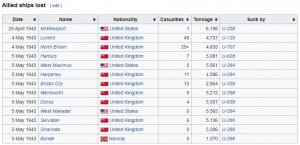
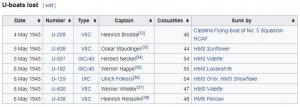 https://en.wikipedia.org/wiki/Convoy_ONS_5
https://en.wikipedia.org/wiki/Convoy_ONS_5_order_of_battle
https://en.wikipedia.org/wiki/Convoy_ONS_5
https://en.wikipedia.org/wiki/Convoy_ONS_5_order_of_battle